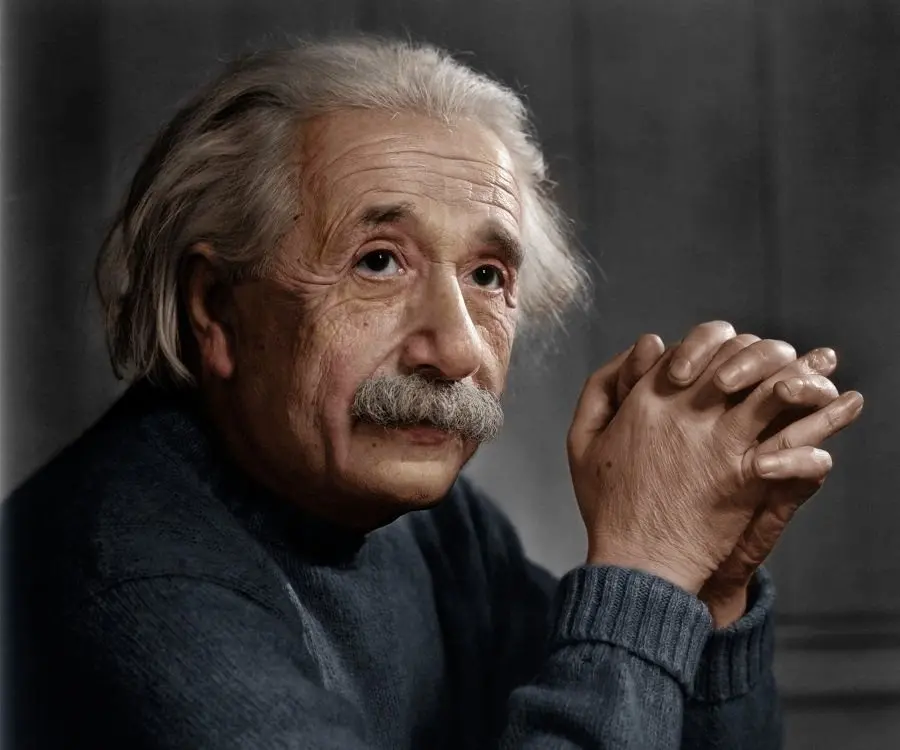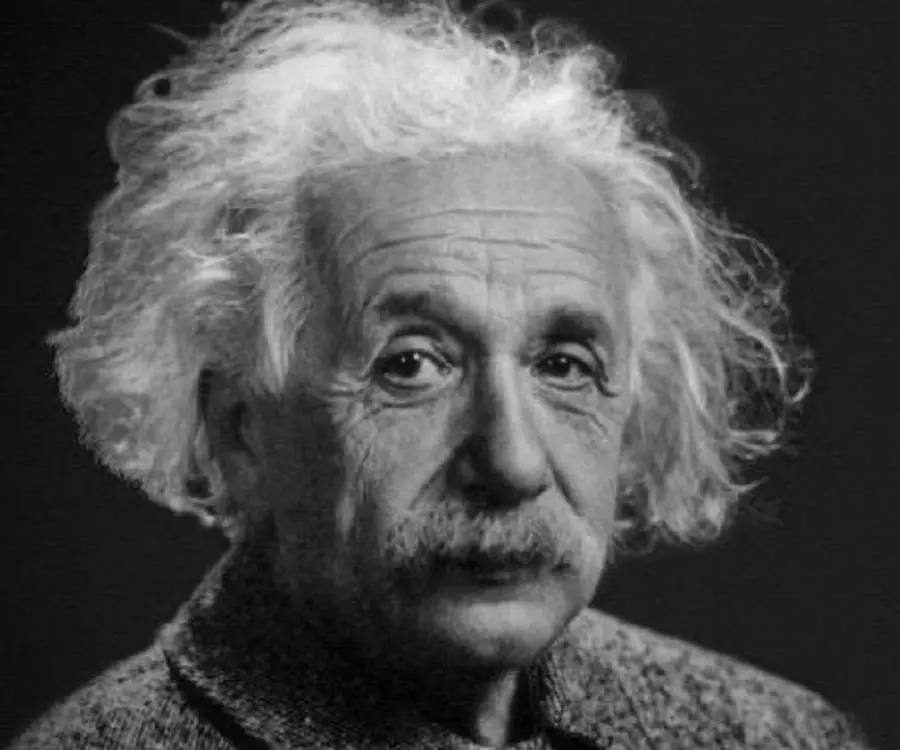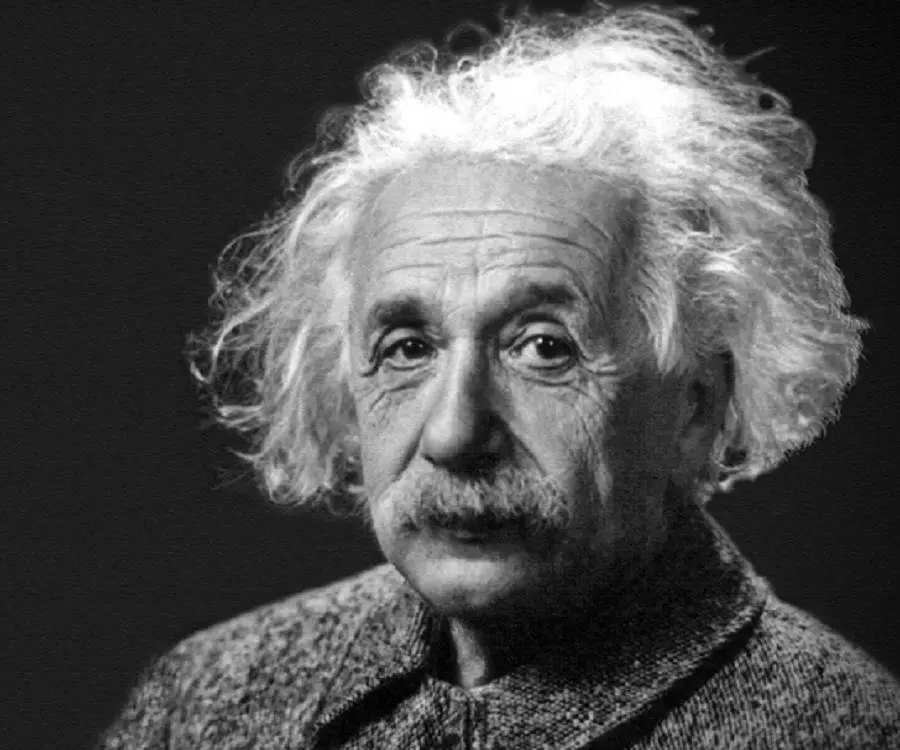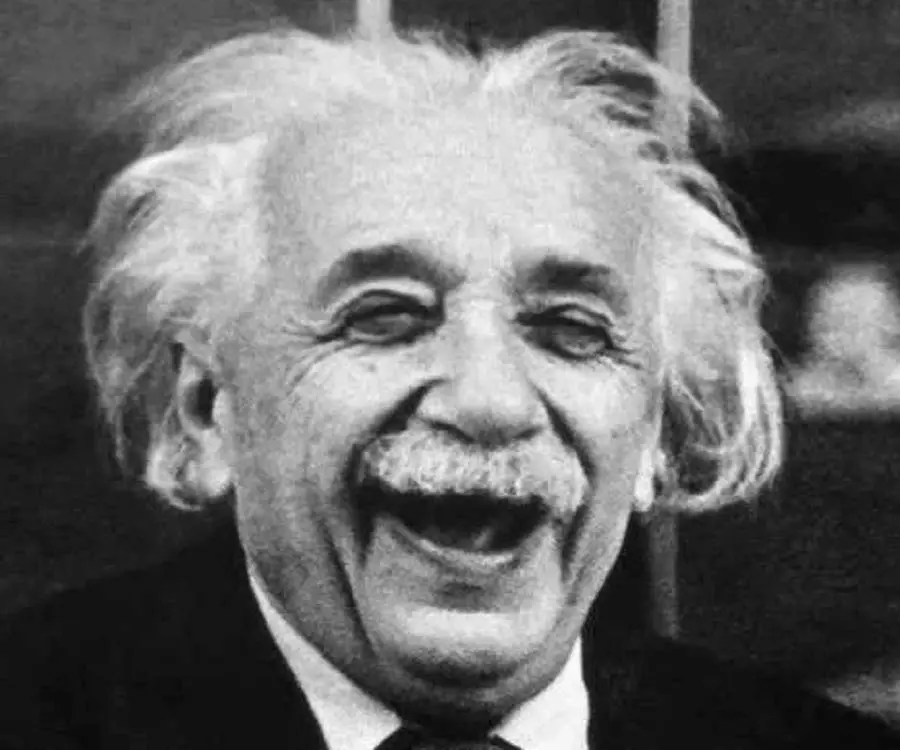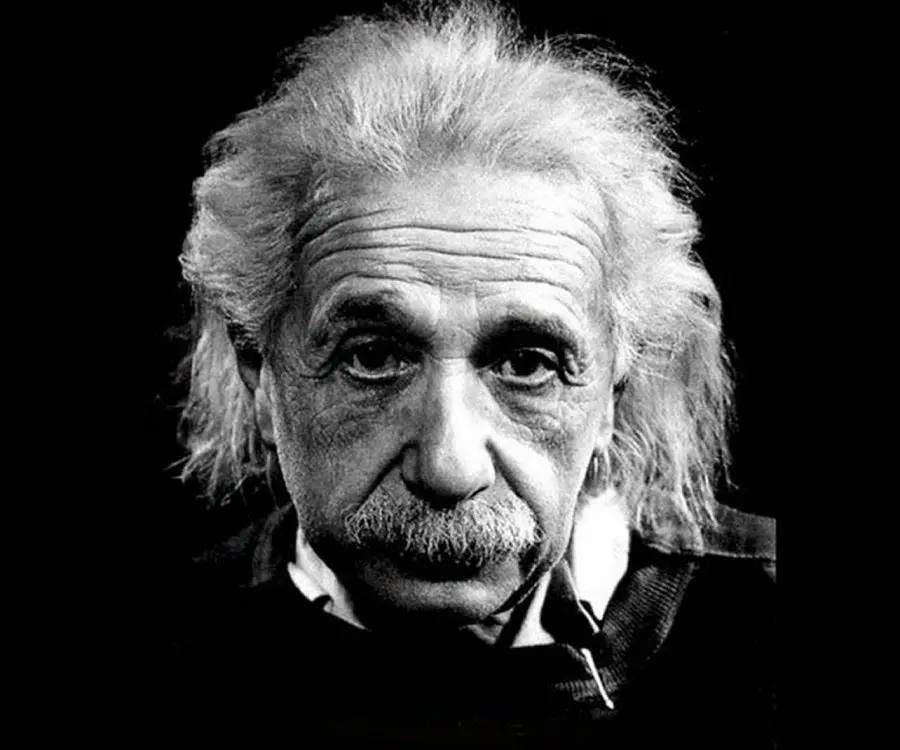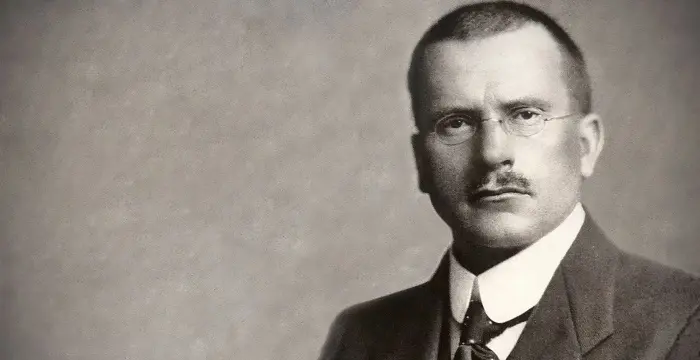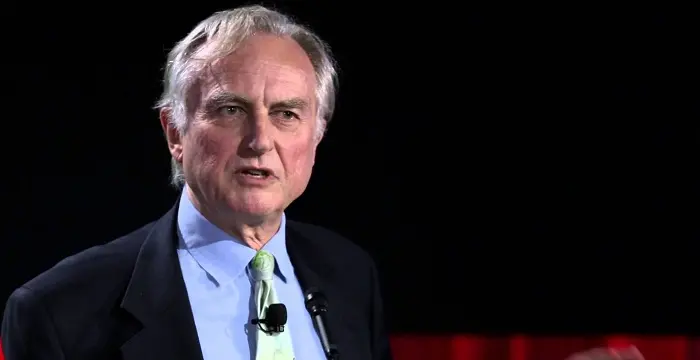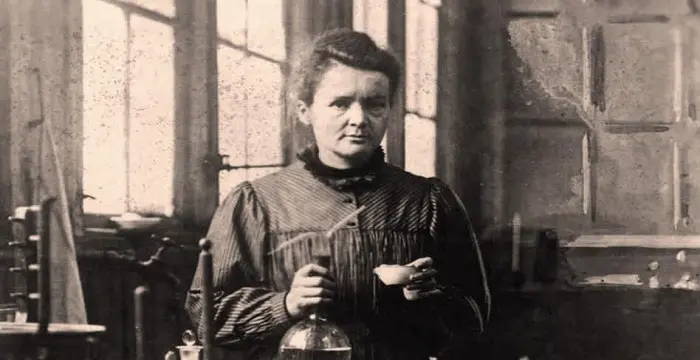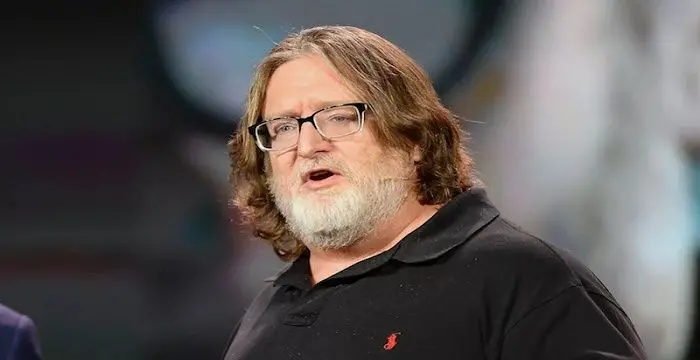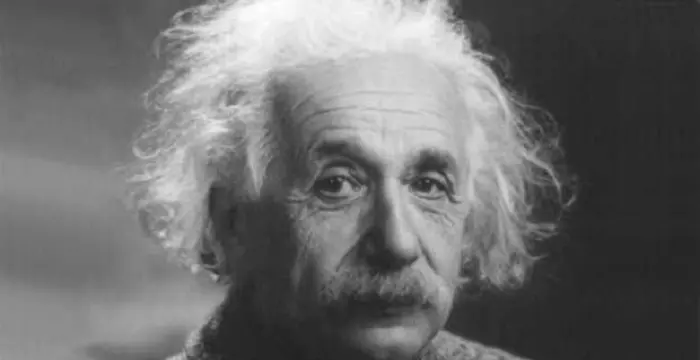
Albert Einstein - Father of Modern Physics, Career and Childhood
Albert Einstein's Personal Details
Albert Einstein is popularly known as the Father of Modern Physics
| Information | Detail |
|---|---|
| Birthday | March 14, 1879 |
| Died on | April 18, 1955 |
| Nationality | German, American |
| Famous | Left Handed, Scientists, Physicists, INTP, Father of Modern Physics |
| Spouses | Mileva Marić |
| Siblings | Maja Einstein |
| Childrens | Hans Albert Einstein Eduard Einstein, Ilse Einstein, Lieserl Einstein, Margot Einstein |
| Universities |
|
| Founder / Co-Founder |
|
| Discoveries / Inventions |
|
| Birth Place | Ulm, Kingdom of Württemberg, German Empire |
| Born Country | Germany |
| Political Ideology | socialist |
| Height | 175 |
| Gender | Male |
| Father | Hermann Einstein |
| Mother | Pauline Einstein |
| Sun Sign | Pisces |
| Born in | Ulm, Kingdom of Württemberg, German Empire |
| Famous as | Father of Modern Physics |
| Died at Age | 76 |
Albert Einstein's photo
Who is Albert Einstein?
Do you fondly call the whiz kid in your class/ organization ‘Einstein’? If yes, then you aren’t the only one who does so. People around the world honor their friends and acquaintance with the title of ‘Einstein’ for the person’s immaculate brilliance and genius mind. While there may be a lot of genius mind set at work to this date, only once in a century is Albert Einstein born. The 19th century not just witnessed the birth of Albert Einstein, but with it, the birth of modern physics. Rightly known as the Father of Modern Physics, Albert Einstein was, without a doubt, the most influential physicist of the 20th century. With his research and finding, Einstein created a revolution in the field of science. Amongst his numerous works: (a) the general theory of relativity, which provided a unified description of gravity as a geometric property of space and time, and (b) photoelectric effect that established the quantum theory within physics are the most important ones. During his lifetime, Einstein published more than 300 scientific papers, apart from 150 non-scientific works. He was the proud recipient of numerous awards, such as Nobel Prize in Physics, Copley Medal, Matteucci Medal and Max Planck medal. Other than these, he has also been credited by the Times magazine as the Person of the Century. Such was his contribution to mankind that his name Einstein has been made synonymous to being "genius".
// Famous INTP
Carl Jung
Carl Jung was a Swiss psychiatrist famous for founding the school of analytical psychology. This biography of Carl Jung provides detailed information about his childhood, life, achievements, works & timeline.
Richard Dawkins
Richard Dawkins is an English ethologist and evolutionary biologist. This biography of Richard Dawkins provides detailed information about his childhood, life, achievements, works & timeline.
Marie Curie
Marie Curie was a Physicist and Chemist, who was world renowned for her work on radioactivity. She also was the winner of two Nobel Prize. Read this biography to get info about her life and profile.
Childhood & Early Life
Born to Hermann Einstein and Pauline Einstein, in Ulm, in the Kingdom of Wurttemberg, Albert Einstein was one of the two children of the couple. He had a younger sister named Maja Einstein
The family shifted base to Munich, where his father, along with his uncle, founded the Elektrotechnische Fabrik J. Einstein & Cie Company, manufacturing electrical equipment based on direct current.
Albert’s first taste of education was at the Catholic Elementary School, when he was five. After acquiring three years of education, he was transferred to the Luitpold Gymnasium. Post completing advanced primary and secondary school education, he left Germany.
Right from the early childhood, Einstein showed signs of having an in-depth talent and skill for mathematics. During this time, he used to build models and mechanical devices, but those were for mere entertainment.
It was at the age of ten that Einstein’s fantasy for the mathematics grew, when he was handed over popular books on science, mathematical texts and philosophical writings by Max Talmund. These included Immanuel Kant's Critique of Pure Reason, and Euclid's Elements.
In 1894, with the introduction of alternating current to the world, Einstein’s father went out of business. As such, in search of trade, the family moved to Milan initially and a few months later to Pavia.
Einstein, however, stayed back at Munich to complete his studies at Luitpold Gymnasium. Though he did try to adhere to the wishes of his father who wanted Einstein to pursue electrical engineering, it wasn’t long before Einstein withdrew his name from the school roll list as his views clashed with the study regimen of the education center. While Einstein craved for creative learning, the institution focussed on rote learning
Joining his family in Pavia in 1894, he started working on what was his first paper titled, ‘On the Investigation of the State of the Ether in a Magnetic Field’.
The following year, Einstein appeared for the examinations for the Swiss Federal Polytechnic in Zurich. Though he did not clear the test, his grades in physics and mathematics were exceptional.
Adhering to the advice of the Principal of Polytechnic, Einstein enrolled himself in the Aargau Cantonal School in Aarau, Switzerland, for the academic year 1895-96, to complete his secondary schooling.
Fearing the call for military service, Einstein renounced his citizenship in the German Kingdom of Wurttemberg in 1896. His decision was duly supported by his father. In the month of September, he passed the exam with overall good grades, once again gaining top grades in papers of mathematics and physics.
Einstein was only seventeen years of age when he enrolled in the four-year mathematics and physics teaching diploma program at the ETH Zurich. He was awarded the Zurich Polytechnic teaching diploma degree in 1900.
The following year, i.e. in 1901, Einstein gained Swiss citizenship.
Formative Years
Post graduating, Einstein spent two years in search of a job in the teaching sector, but could not secure even one. Finally, with the help of his former classmate’s father, he bagged the chair of an assistant examiner at the Federal Office for Intellectual Property, the patent office.
It was in 1903 that Einstein became a permanent officer therein. His job involved evaluating patent applications for electromagnetic devices.
His work was mostly related to questions about transmission of electric signals and electrical-mechanical synchronization of time. It was through this that Einstein made his conclusion about the nature of light and the fundamental connection between time and space.
Most of Einstein’s strikingly remarkable works came during this period. He utilized his free time by engaging himself in scientific research. In 1901, he published the paper ‘Folgerungen aus den Kapillaritat Erscheinungen’ (Conclusions from the Capillarity Phenomena) in the most prominent scientific journal, Annalen der Physik.
Four years thence, in 1905, he completed his thesis by presenting a dissertation which was entitled “A New Determination of Molecular Dimensions”. For the same, he was awarded a PhD by the University of Zurich. However, the degree was just the beginning of the many more things that were waiting to come up.
Excellence at Academics
Year 1905, fondly called the Annus Mirabilis or the miracle year in the life of Einstein, saw the birth of Einstein as innovator and creator, for it was during this year that he published his four ground-breaking papers.
The papers provided information on the photoelectric effect, Brownian motion, special relativity, and the equivalence of matter and energy. They not only changed the way the world looked at time, space and matter, but also contributed and laid foundation for the growth of modern physics. Additionally, the papers brought Einstein to the limelight.
As expected, post the publication of the papers, Einstein became instantly famous and was recognized as the leading scientist. In 1908, he was appointed as a lecturer at the University of Bern. However, Einstein quit this position as well as the one he was holding at the patent office to take up the profile of physics docent at the University of Zurich.
In 1911, he became a full-time professor at the Karl-Ferdinand University in Prague.
Three years later, in 1914, he returned to Germany as he was appointed director of the Kaiser Wilhelm Institute for Physics and a professor at the Humboldt University of Berlin, with a special clause in his contract that freed him from most teaching obligations.
Two years thence in 1916, Einstein was appointed as the president of the German Physical Society, a position he held for two years. During this time, Einstein also attained membership of the Prussian Academy of Sciences.
Voyages Undertaken
Einstein’s growing reputation resulted in his being invited officially by the Mayor of New York, who personally welcomed the great scientist on April 2, 1921. During his stay at New York, Einstein delivered several lectures at the Columbia and Princeton University.
Post New York, Einstein moved to Washington D.C, where he accompanied several representatives of the National Academy of Science to the White House.
During his journey back to Europe, Einstein made a short stay as the guest of the British statesman and philosopher Viscount Haldane in London. During his visit, Einstein met several scientific, intellectual and political figures and delivered a lecture at Kings College.
The following year, in 1922, Einstein journeyed to Asia and later to Palestine, as a part of the six-month excursion and speaking tour. His travels included Singapore, Ceylon, and Japan, where he gave a series of lecture to more than thousands of Japanese.
His first lecture at Japan lasted for four hours after which he met the emperor and the empress at the Imperial Palace. Einstein visit to Palestine lasted for 12 days. It also became his only visit to the region.
Einstein’s next visit to America was in 1933. He visited several universities during the tour. He even undertook his third two-month visiting professorship at the California Institute of Technology.
While returning to Belgium by the end of March, Einstein heard the news that his cottage and recreational boat had been confiscated by the Nazi’s, who had risen to power under the authority of Germany’s new chancellor.
Upon returning, Einstein almost immediately went to the German consulate where he turned down his passport and renounced his German citizenship. (He had earlier renounced citizenship in the German Kingdom of Wurttemberg.
A new law had been set in Germany according to which Jews could not hold any official positions, including teaching at the universities. Not only were Einstein’s work targeted, he himself was on the list of assassination targets of the Nazi’s with a $5,000 bounty on his head.
Einstein found his temporary shelter in England, before returning to US in the October of 1933. Therein, he took up a position at the Institute for Advanced Study at Princeton, New Jersey, that required his presence for six months each year. His association with the institute lasted until his death.
Einstein was uncertain of his future, as he had offers from the European Universities as well. He, however, made the decision to permanently stay in the United States and thus, applied for citizenship.
In the year 1939, a group of Hungarian scientists attempted to alert Washington of the ongoing atomic bomb research undertaken by the Nazi’s. However, not much heed was paid to their warning. As such, they resorted to Einstein, who wrote a letter to President Franklin D. Roosevelt alerting him of the possibility.
The letter immediately drew the attention of the US government, which became directly involved in uranium research and associated chain reaction research. US utilized its immense financial and scientific resource to initiate the Manhattan Project and surfaced as the only country to successfully develop an atomic bomb during World War II.
Einstein gained a permanent citizenship in US in the year 1940. What was most appealing to him about this country and its culture was the existence of meritocracy unlike Europe. In US, people were rewarded for their works and they had the right to say and think what pleased them.
Einstein, in his later years, was even offered the position of President of Israel, but he declined the same stating that he had neither the aptitude nor the experience.
Major Works
In 1905, Einstein came up with his revolutionary works, which were focussed on photoelectric effect, Brownian motion, the special theory of relativity and the equivalence of matter and energy.
He worked on thermodynamic fluctuations and statistical physics. He even worked on general relativity and applied the same to explain cosmology. The other work carried out by Einstein include Schrodinger gas model and Einstein refrigerator.
Awards & Achievements
He received the Nobel Prize in Physics in 1921 for his services to Theoretical Physics, and especially for his discovery of the law of the photoelectric effect.
In 1929, Einstein was presented with the Max Planck medal of the German Physical Society in Berlin
In 1936, he was awarded the Franklin Institute's Franklin Medal for his extensive work on relativity and the photo-electric effect
International Union of Pure and Applied Physics named 2005 as the "World Year of Physics" commemorating the 100th anniversary of the publication of the ‘annus mirabilis’ papers.
Albert Einstein has to his name a science park, located on the hill, Telegrafenberg in Potsdam, Germany. The park has a tower by the name, Einstein Tower which is an astrophysical, built to perform checks of Einstein's theory of General Relativity
Washington DC houses the Albert Einstein Memorial. In it is a monumental bronze statue depicting Einstein seated with manuscript papers in hand.
Four months after his death, the chemical element 99 (einsteinium) was named for him
The Time magazine, in 1999, named Einstein as the Person of the Century.
The United States Postal Service honored Einstein with a Prominent Americans series 8� postage stamp.
In 2008, Einstein was inducted into the New Jersey Hall of Fame.
Personal Life & Legacy
Year 1896 was an important one for Einstein as far as his personal life was concerned, for it was then that he met Mileva Mariac. The two became great friends and very soon, this friendship culminated into marriage. However, before the nuptial knots were tied, Einstein and Mariac became parents to their first born, a daughter whom they named Lieserl.
Einstein and Mariac married in the January of 1903. Later next year, Mariac gave birth to their first son, Hans Albert Einstein. Six years later, the couple was blessed with another son, Eduard. In 1914, Einstein moved to Berlin, while his wife and two sons remained in Zurich.
Five years later, the two divorced on February 14, 1919. The same year, Einstein remarried with his then lady love, Elsa Lowenthal, after having had a relationship with her since 1912.
In 1933, the couple immigrated to the United States. After having being diagnosed with heart and kidney problems in 1835, Elsa didn’t live long and passed away the December of 1936.
Albert Einstein experienced internal bleeding, which was caused by the rupture of an abdominal aortic aneurysm on April 17, 1955. Although Dr. Rudolph Nissen had reinforced the same surgically in 1948, the problem reappeared. He was admitted to the Princeton Hospital.
Though the doctors were preparing for the surgery, Einstein refused the same saying he did not want to prolong life using artificial measures. As a result, Einstein breathed his last on April 18, 1955. He was cremated and his ashes were scattered at an undisclosed location.
Trivia
He is known as the Father of Modern Physics. Interestingly, his surname has been adjudged with the meaning ‘genius’, and is used by the world all over.
A mastermind and impeccable theoretical physicist, he is responsible for creating new waves in the field of modern physics. However, as a child, he faced speech difficulty and had a slow cadence in speaking.
There are two instances that had a marked effect on the life of this Nobel Prize winning physicists – the encounter with the compass and discovering Euclid’s Element a geometry book which he fondly called ‘holy little geometry book’.
Post death, the pathologist of Princeton Hospital, Thomas Stoltz Harvey, removed this proficient scientist’s brain for preservation without the permission of his family, in the hope that the neuroscience of the future would be able to discover what made the man who developed the theory of relativity so intelligent.
Top 10 Facts You Did Not Know About Albert Einstein
Albert Einstein considered himself an agnostic, not an atheist as some people believe.
He was a ladies’ man and had numerous extramarital affairs.
His mother was a piano player and she instilled in him a lifelong love for music. Einstein himself was a talented violin player.
He was a slow learner as a child and had speech problems.
It is said that he expected a lot from his first wife and set some weird rules for her to follow.
Einstein was well-known for his unkempt appearance, especially his unruly hair. A fact that not many people know is that he hated wearing socks.
Einstein was once offered the presidency of Israel which he politely declined.
His Nobel Prize money went to his ex-wife as a divorce settlement.
He was famous for being absent minded—he could not remember names, dates, and phone numbers.
He loved sailing and was given a boat as a gift on his 50th birthday. But he was not a good sailor and had to be constantly rescued.
// Famous Physicists
Henry Cavendish
Henry Cavendish was a theoretical chemist and physicist, renowned for discovery of hydrogen and calculation of the mass of earth. To know more about his childhood, profile, timeline and career read on
Walter Kohn
Nobel Laureate Walter Kohn was an Austrian-born American theoretical chemist and physicist. Check out this biography to know about his childhood, life, achievements, works & timeline.
Nikola Tesla
Nikola Tesla was a Serbian-American inventor, best known for his development of alternating current electrical systems. This biography of Nikola Tesla provides detailed information about his childhood, life, achievements, works & timeline.
Albert Einstein biography timelines
- // 14th Mar 1879Born to Hermann Einstein and Pauline Einstein, in Ulm, in the Kingdom of Wurttemberg, Albert Einstein was one of the two children of the couple. He had a younger sister named Maja Einstein
- // 1894In 1894, with the introduction of alternating current to the world, Einstein’s father went out of business. As such, in search of trade, the family moved to Milan initially and a few months later to Pavia.
- // 1894Joining his family in Pavia in 1894, he started working on what was his first paper titled, ‘On the Investigation of the State of the Ether in a Magnetic Field’.
- // 1895The following year, Einstein appeared for the examinations for the Swiss Federal Polytechnic in Zurich. Though he did not clear the test, his grades in physics and mathematics were exceptional.
- // 1896Fearing the call for military service, Einstein renounced his citizenship in the German Kingdom of Wurttemberg in 1896. His decision was duly supported by his father. In the month of September, he passed the exam with overall good grades, once again gaining top grades in papers of mathematics and physics.
- // 1896 To 1900Einstein was only seventeen years of age when he enrolled in the four-year mathematics and physics teaching diploma program at the ETH Zurich. He was awarded the Zurich Polytechnic teaching diploma degree in 1900.
- // 1901The following year, i.e. in 1901, Einstein gained Swiss citizenship.
- // 1901Most of Einstein’s strikingly remarkable works came during this period. He utilized his free time by engaging himself in scientific research. In 1901, he published the paper ‘Folgerungen aus den Kapillaritat Erscheinungen’ (Conclusions from the Capillarity Phenomena) in the most prominent scientific journal, Annalen der Physik.
- // 1903It was in 1903 that Einstein became a permanent officer therein. His job involved evaluating patent applications for electromagnetic devices.
- // 1903Einstein and Mariac married in the January of 1903. Later next year, Mariac gave birth to their first son, Hans Albert Einstein. Six years later, the couple was blessed with another son, Eduard. In 1914, Einstein moved to Berlin, while his wife and two sons remained in Zurich.
- // 1905Four years thence, in 1905, he completed his thesis by presenting a dissertation which was entitled “A New Determination of Molecular Dimensions”. For the same, he was awarded a PhD by the University of Zurich. However, the degree was just the beginning of the many more things that were waiting to come up.
- // 1905Year 1905, fondly called the Annus Mirabilis or the miracle year in the life of Einstein, saw the birth of Einstein as innovator and creator, for it was during this year that he published his four ground-breaking papers.
- // 1908As expected, post the publication of the papers, Einstein became instantly famous and was recognized as the leading scientist. In 1908, he was appointed as a lecturer at the University of Bern. However, Einstein quit this position as well as the one he was holding at the patent office to take up the profile of physics docent at the University of Zurich.
- // 1911In 1911, he became a full-time professor at the Karl-Ferdinand University in Prague.
- // 1914Three years later, in 1914, he returned to Germany as he was appointed director of the Kaiser Wilhelm Institute for Physics and a professor at the Humboldt University of Berlin, with a special clause in his contract that freed him from most teaching obligations.
- // 1916Two years thence in 1916, Einstein was appointed as the president of the German Physical Society, a position he held for two years. During this time, Einstein also attained membership of the Prussian Academy of Sciences.
- // 1919Five years later, the two divorced on February 14, 1919. The same year, Einstein remarried with his then lady love, Elsa Lowenthal, after having had a relationship with her since 1912.
- // 1921Einstein’s growing reputation resulted in his being invited officially by the Mayor of New York, who personally welcomed the great scientist on April 2, 1921. During his stay at New York, Einstein delivered several lectures at the Columbia and Princeton University.
- // 1921He received the Nobel Prize in Physics in 1921 for his services to Theoretical Physics, and especially for his discovery of the law of the photoelectric effect.
- // 1922The following year, in 1922, Einstein journeyed to Asia and later to Palestine, as a part of the six-month excursion and speaking tour. His travels included Singapore, Ceylon, and Japan, where he gave a series of lecture to more than thousands of Japanese.
- // 1929In 1929, Einstein was presented with the Max Planck medal of the German Physical Society in Berlin
- // 1933Einstein’s next visit to America was in 1933. He visited several universities during the tour. He even undertook his third two-month visiting professorship at the California Institute of Technology.
- // 1933Einstein found his temporary shelter in England, before returning to US in the October of 1933. Therein, he took up a position at the Institute for Advanced Study at Princeton, New Jersey, that required his presence for six months each year. His association with the institute lasted until his death.
- // 1936In 1936, he was awarded the Franklin Institute's Franklin Medal for his extensive work on relativity and the photo-electric effect
- // 1939In the year 1939, a group of Hungarian scientists attempted to alert Washington of the ongoing atomic bomb research undertaken by the Nazi’s. However, not much heed was paid to their warning. As such, they resorted to Einstein, who wrote a letter to President Franklin D. Roosevelt alerting him of the possibility.
- // 1940Einstein gained a permanent citizenship in US in the year 1940. What was most appealing to him about this country and its culture was the existence of meritocracy unlike Europe. In US, people were rewarded for their works and they had the right to say and think what pleased them.
- // 18th Apr 1955Though the doctors were preparing for the surgery, Einstein refused the same saying he did not want to prolong life using artificial measures. As a result, Einstein breathed his last on April 18, 1955. He was cremated and his ashes were scattered at an undisclosed location.
// Famous Scientists
Juliane Koepcke
Juliane Koepcke is a German-Peruvian biologist, who was the lone survivor among the 92 passengers and crew of the ill-fated LANSA Flight 508 that crashed in the Peruvian rainforest on 24 December 1971. Know more about her life in this biography.
Henry Cavendish
Henry Cavendish was a theoretical chemist and physicist, renowned for discovery of hydrogen and calculation of the mass of earth. To know more about his childhood, profile, timeline and career read on
Konstantin Tsiolkovsky
Konstantin Tsiolkovsky was a Russian rocket scientist and a pioneer of astronautics. This biography provides detailed information about his childhood, family, personal life, career, achievements, etc.
Gabe Newell
Gabe Newell is an American computer programmer and businessman, best known as the co-founder of ‘Valve Corporation.’ This biography provides detailed information about his childhood, family, personal life, career, etc.
Grigori Perelman
Grigori Perelman is a Russian mathematician who is best known for his contributions to Riemannian geometry and geometric topology. Check out this biography to know about his childhood, family life, achievements and fun facts about him.
Eduardo Saverin
Eduardo Luiz Saverin is a Brazilian internet entrepreneur and investor. This biography profiles his childhood, life, career, achievements, and timeline
Albert Einstein's FAQ
What is Albert Einstein birthday?
Albert Einstein was born at 1879-03-14
When was Albert Einstein died?
Albert Einstein was died at 1955-04-18
Where was Albert Einstein died?
Albert Einstein was died in Princeton, New Jersey, United States
Which age was Albert Einstein died?
Albert Einstein was died at age 76
Where is Albert Einstein's birth place?
Albert Einstein was born in Ulm, Kingdom of Württemberg, German Empire
What is Albert Einstein nationalities?
Albert Einstein's nationalities is German, American
Who is Albert Einstein spouses?
Albert Einstein's spouses is Mileva Marić
Who is Albert Einstein siblings?
Albert Einstein's siblings is Maja Einstein
Who is Albert Einstein childrens?
Albert Einstein's childrens is Hans Albert Einstein Eduard Einstein, Ilse Einstein, Lieserl Einstein, Margot Einstein
What was Albert Einstein universities?
Albert Einstein studied at University of Zurich (1905), ETH Zurich (1901), Aargau Cantonal School (1895 – 1896), Luitpold Gymnasium
Which company or organization was founded by Albert Einstein?
Albert Einstein was the founder/co-founder of Olympia Academy
What is Albert Einstein's inventions/discoveries?
Law Of The Photoelectric Effect, Einstein Refrigerator was invented (or discovered) by Albert Einstein
What is Albert Einstein's political ideology?
Albert Einstein's political ideology is socialist
How tall is Albert Einstein?
Albert Einstein's height is 175
Who is Albert Einstein's father?
Albert Einstein's father is Hermann Einstein
Who is Albert Einstein's mother?
Albert Einstein's mother is Pauline Einstein
What is Albert Einstein's sun sign?
Albert Einstein is Pisces
How famous is Albert Einstein?
Albert Einstein is famouse as Father of Modern Physics
